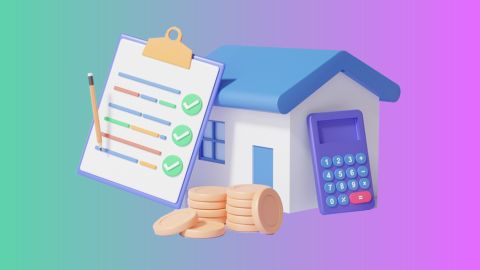When dealing with loans, especially secured ones like a Loan Against Property, knowing the property value during the right base period can be beneficial. Bajaj Finance offers various financial products tailored to meet such needs, helping borrowers leverage their property to access funds.
Definition of Base Period
A base period is a specific timeframe used as a benchmark in economic analysis to measure changes in variables like prices, production, and income. It acts as a point of comparison to observe economic growth or decline over time. Typically, the base period is set to a value of 100, against which other periods are measured. The right choice of base period enables economists, analysts, and policymakers to make accurate assessments and decisions, and formulate policies.Desirable Properties of a Base Period
When selecting a base period, certain properties are considered desirable to ensure meaningful analysis. Here are some of them:- Relevance: The base period should be recent enough to reflect the current economic situation. For example, using a period from several decades ago may not provide accurate insights into today's market dynamics.
- Stability: The period chosen should have a stable economic environment with minimal fluctuations. This helps in avoiding distortions caused by short-term anomalies like economic crises.
- Comparability: The base period should allow for easy comparison with other periods. It should have similar economic conditions to ensure accurate comparisons and meaningful conclusions. You can learn more about property valuation factors by visiting the property value guide.
- Simplicity: Simple and understandable base periods are often preferable. An overly complex or fluctuating period can confuse analysis and reduce its practical application.
- Availability of data: Reliable and comprehensive data must be available for the chosen base period. Data gaps can lead to inaccurate conclusions and flawed analyses.
Importance of Choosing the Right Base Period
- Accurate economic forecasting.
- Effective policymaking.
- Reliable financial analysis.
- Better property valuation during loans.
Examples of Desirable Base Periods
- Stable inflation periods: Periods with low inflation rates are often considered good base periods for economic analysis.
- Post-recession recovery: For understanding growth after economic downturns, using a post-recession recovery period can provide meaningful insights.
- Recent financial year: The most recent financial year is frequently used as a base period for annual comparisons.
Challenges in Selecting a Base Period
- Data unavailability: Finding a period with complete and reliable data can be challenging.
- Economic volatility: Periods marked by economic volatility, such as pandemics or financial crises, may not serve as stable base periods.
- Changing economic structures: The economic environment changes over time; hence, a base period from a structurally different economic era may not be comparable.
Best Practices for Selecting a Base Period
Selecting the best base period involves careful consideration of several factors. Start by assessing the stability of the period. A stable base period leads to more accurate economic indicators. Consider the data availability and ensure that comprehensive and reliable data sets are accessible. Also, ensure that the base period is relevant to the current analysis. When looking at property valuation for loans like Bajaj Finserv Loan Against Property, choose a period that reflects the current real estate market.Tools and Resources for Analysing Base Periods
Several tools and resources are available for analysing and selecting a base period:- Statistical software: Software like SPSS, SAS, and R helps in selecting and analysing base periods.
- Economic indicators: Tools like the Consumer Price Index (CPI) or Wholesale Price Index (WPI) provide insights into economic stability.
- Property valuation calculators: For those interested in property-related financial products like Loan Against Property, online EMI calculators can assist in understanding loan feasibility based on the current property value.




